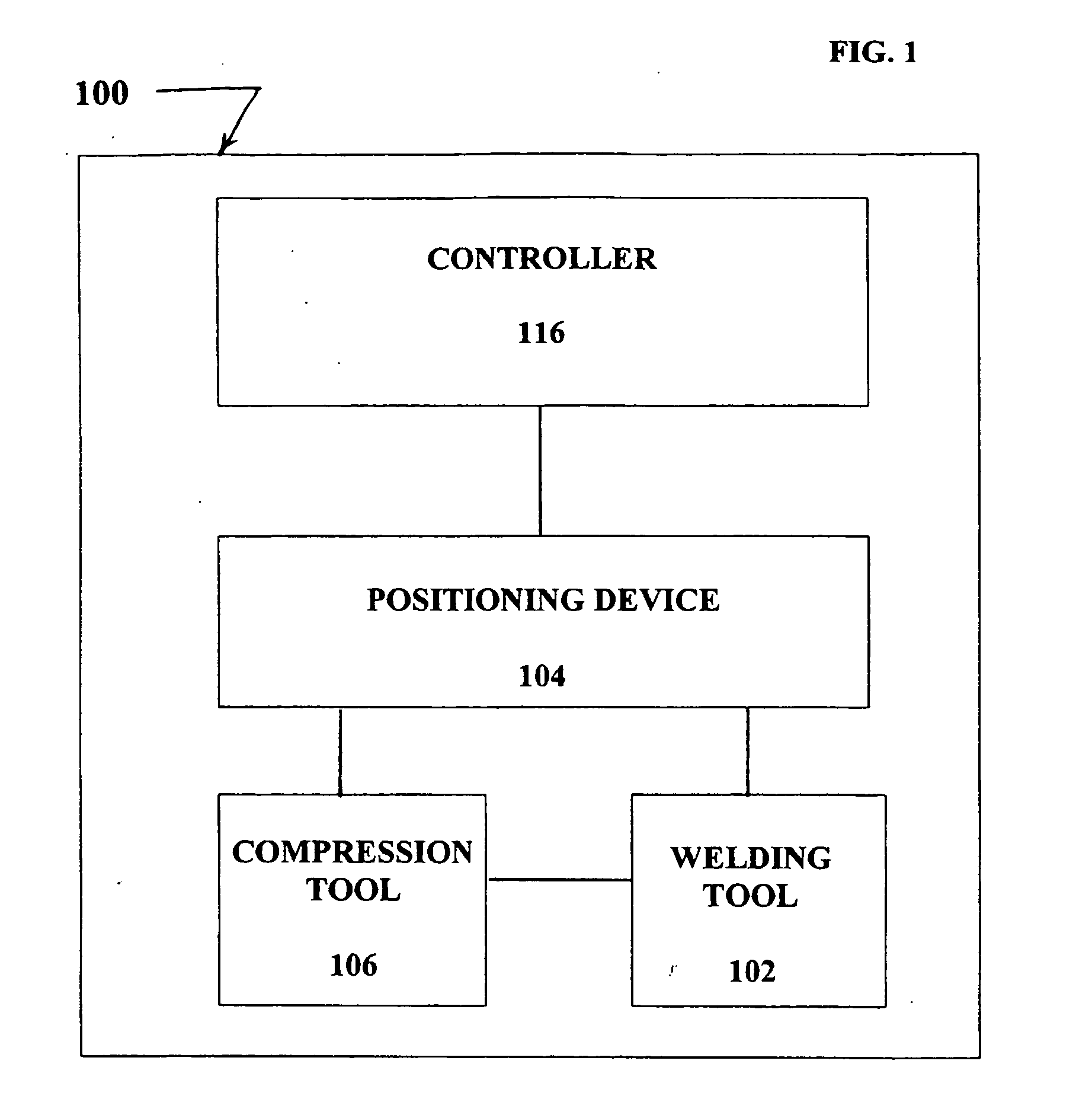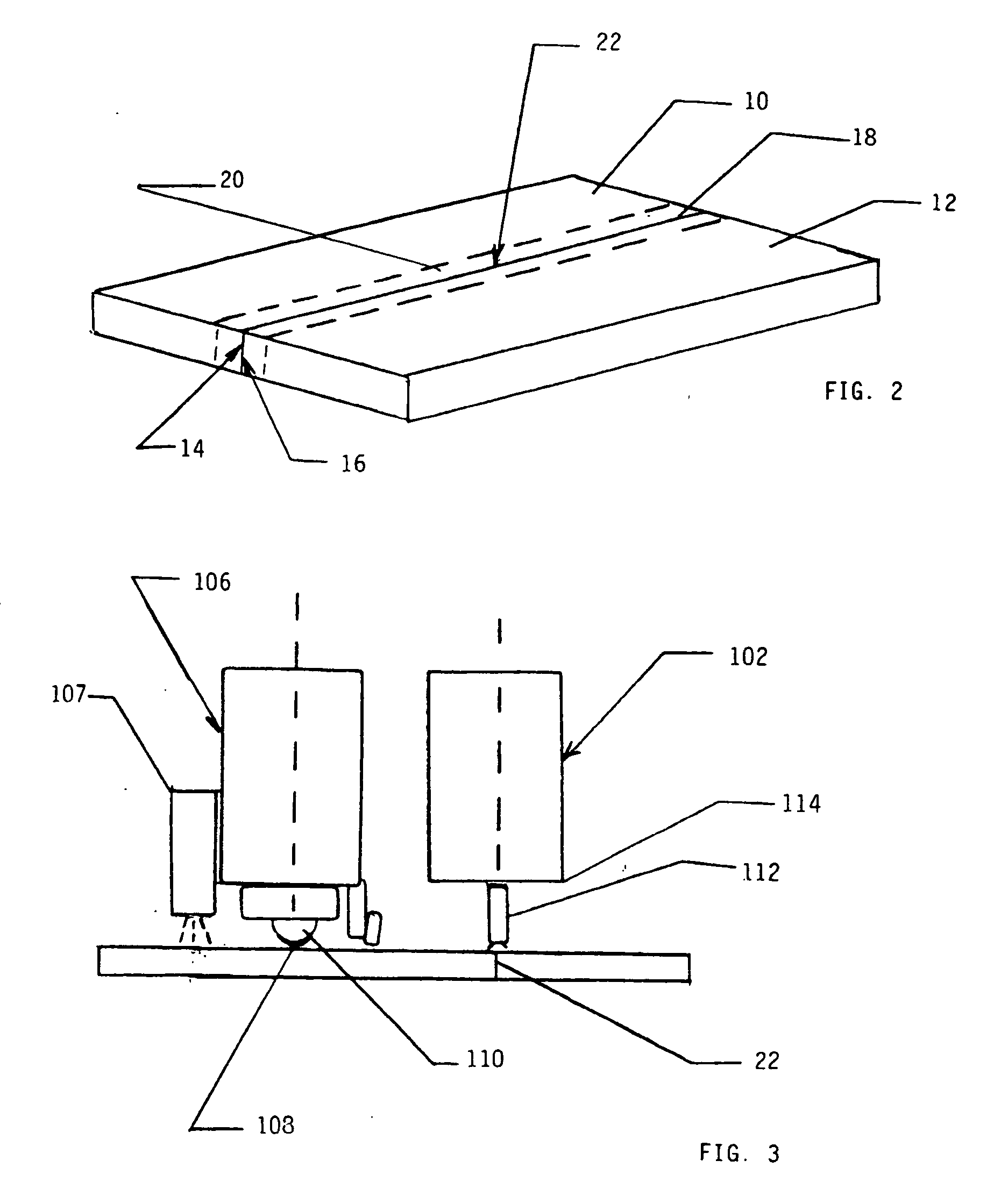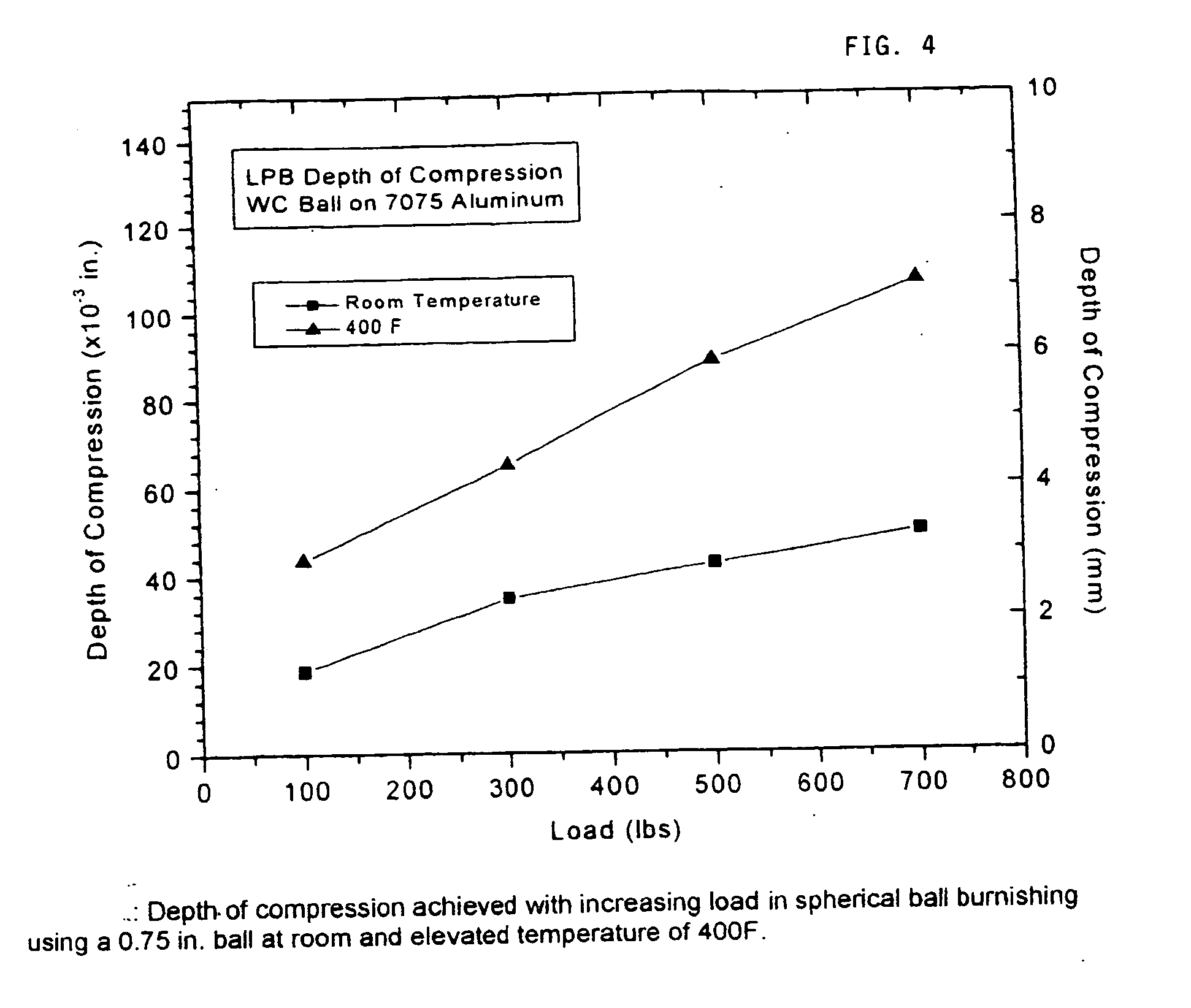Apparatus and method for forming a weld joint having improved physical properties
a technology of weld joints and apparatus, which is applied in the direction of resistance welding apparatus, arc welding apparatus, metal-working apparatus, etc., can solve the problems of reducing the yield strength of plasticized parent materials, forming tensile residual stresses in workpieces, and limited welding applications for certain manufacturing processes. achieve the effect of improving the material properties of the final produ
- Summary
- Abstract
- Description
- Claims
- Application Information
AI Technical Summary
Benefits of technology
Problems solved by technology
Method used
Image
Examples
Embodiment Construction
[0055] The present invention is directed to a new and novel method and apparatus for performing the method of forming a weld joint and, a more particularly, a method and apparatus for forming a weld joint which utilizes a controlled process of inducing a specific compressive residual stress pattern and degree of cold working and surface hardening along a weld line to improve the physical properties of the weld joint and the resulting final product. In a preferred embodiment of the invention, the welding apparatus comprises a welding tool for welding one or more workpieces, and a compression tool for inducing a layer of residual compressive stress in the surface of a workpiece. In another preferred embodiment of the invention, the method utilizes a process of inducing a specific and selected pattern of compressive residual stress and selected amount of cold working and surface hardening, such as by the process of controlled low plasticity burnishing, to improve the physical propertie...
PUM
| Property | Measurement | Unit |
|---|---|---|
| temperature | aaaaa | aaaaa |
| surface temperature | aaaaa | aaaaa |
| compressive stress | aaaaa | aaaaa |
Abstract
Description
Claims
Application Information
 Login to View More
Login to View More - R&D
- Intellectual Property
- Life Sciences
- Materials
- Tech Scout
- Unparalleled Data Quality
- Higher Quality Content
- 60% Fewer Hallucinations
Browse by: Latest US Patents, China's latest patents, Technical Efficacy Thesaurus, Application Domain, Technology Topic, Popular Technical Reports.
© 2025 PatSnap. All rights reserved.Legal|Privacy policy|Modern Slavery Act Transparency Statement|Sitemap|About US| Contact US: help@patsnap.com



